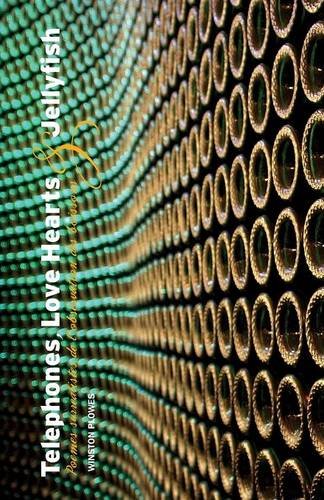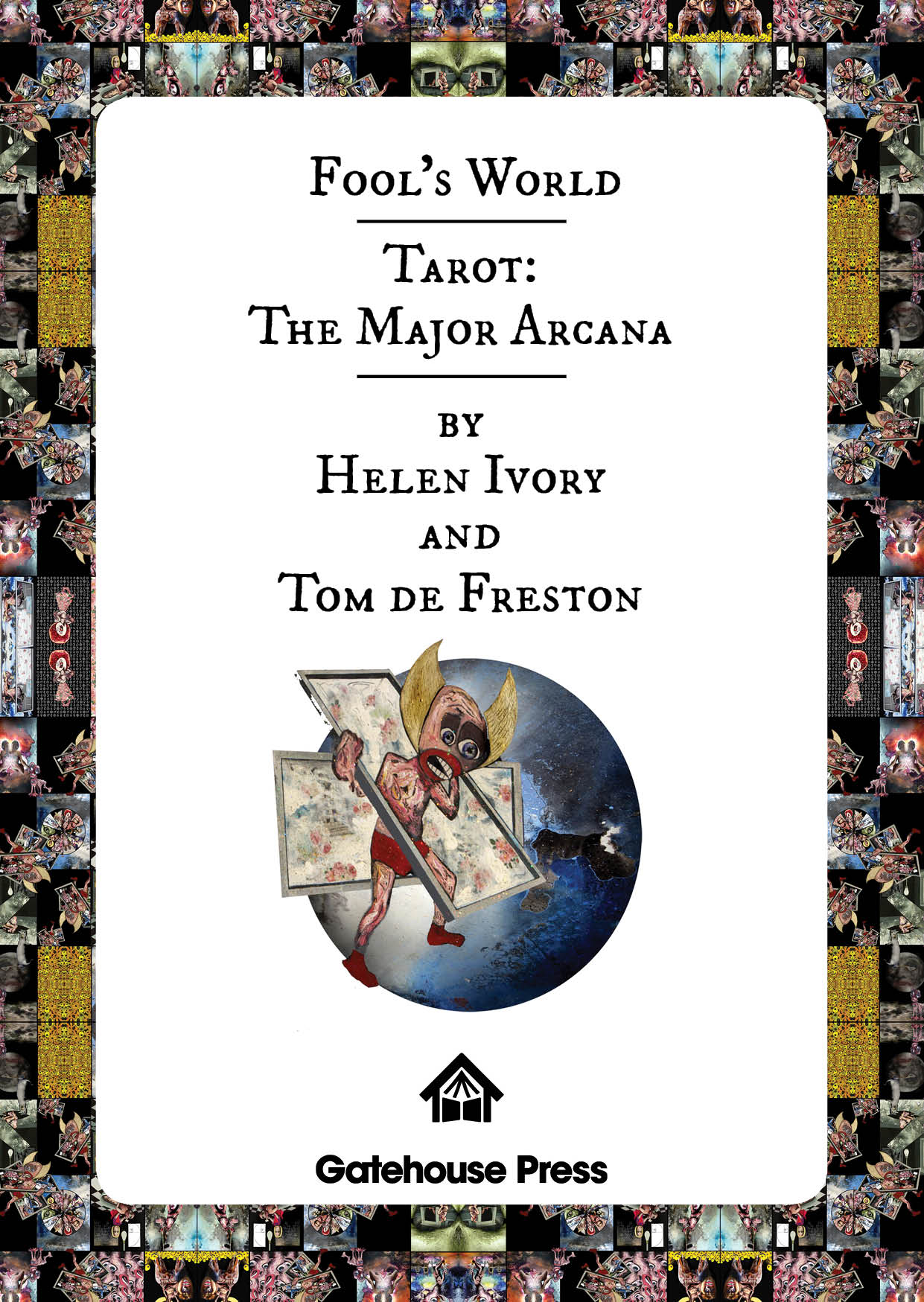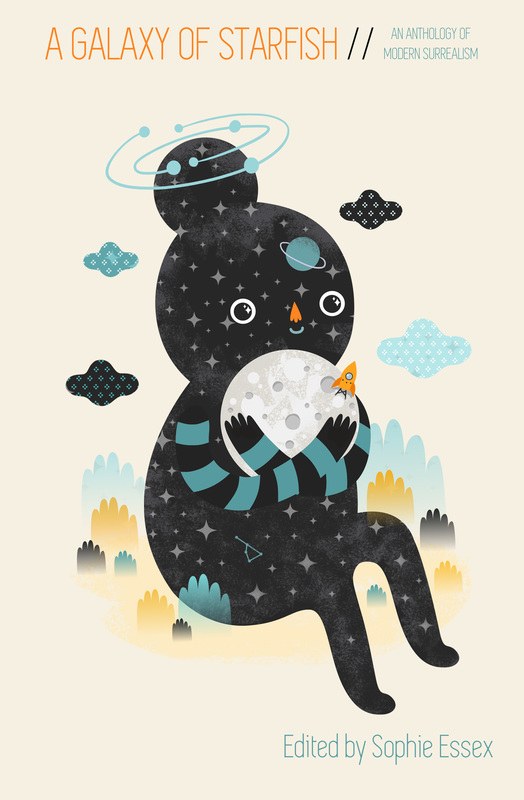Telephones, Love Hearts & Jellyfish by Winston Plowes
– Reviewed by Simon Zonenblick –
The most surreal aspect of Winston Plowes‘ collection of ‘poetry of drinks’, Telephones, Love Hearts & Jellyfish, is surely that it is not, in the strictest sense, “by” Winston Plowes. A series of strange observations inspired by pictures of a dazzling array of drinks, the collection includes collaborative sequences and poems gleaned from facebook comments. Some of the richest observations come in the form of shared poems, sides of a pint glass photographed and commented on by multiple contributors – Punch and Judy, Inspector Clouseau, Fish and sad octopus and A slightly sinister pumpkin with a hat on are all, bizarrely, discerned, as are the eerier ghosts of Pac-Man and Freddy Kruegger. Later, a half-pint glass is seen to represent a jellyfish attacked by a shark, a fish swimming straight at you, Slimer from Ghostbusters, and Peppa Pig.
The book is described as surrealist poetry on its back cover, but for readers like myself who are unfamiliar, Winston Plowes provides a glossary, together with a list of recommended Surrealist reading, a raft of black and white photos of many of the drinks, and a guide to how the reader might go about conducting a bit of drink-picturing: For drinks that leave a pattern on the glass you can make observations after every sip, or when you have finished … for fizzy drinks you will have to be very quick … and my personal favourite, Beware waiters and waitresses. They can spoil your fun.
Judging by titles (Playing Football in the Style of Matisse – glimpsed in the shades of a half-pint of Blonde Witch) and the reading list of books by and about Andre Breton, Escher, Magritte, Dali and Joan Miro, the collection is primarily influenced by twentieth-century European Surrealism. Being unfamiliar with much of this I am unable to offer any in depth analysis of how surreal or Surrealist the book might be found to be, but much of it is presented in such a way that lack of familiarity does not prevent enjoyment. I lose the thread mid-way through, when the format veers towards over-played. ‘The Thought Fox’, inspired by a pint of Hedge Monkey, gives no nod towards the Hughes-derived connotation of its title, or the featured drink: instead the word Nothing is simply repeated five times, the first few times followed by sip, while several of the poems that follow feature no photograph. I am undecided whether this is of benefit – allowing the reader to picture for themselves – but one the strengths of sections where the drink is pictured is that the reader is able to “play the game” and create their own interpretations of the image.
In ‘The Java Lounge’, we are invited to enjoy the effects of the wonderful bean, as Plowes presents echoing imagery rescued from left-over cups of hot chocolate and coffee, usually photographed after the drinkers have left. Its first two poems are jointly written by Gaia Holmes, and concern a latte and an Americano, which evoke images such as:
A roaring hare
Biology class drawing of fallopian tubes
A dog chew
Everest
and
Seal,
Whale,
The Scream of Nature by Edvard Munch
Some of the poem titles seem to bear little relation to the images – ‘The Curious incident of the Dog in the Night-Time’, written with Maisy Howell, features the fantastic
Dancing poodle
Demented Saint Bernard
but no further clues. Others are more successful, as the significance of the titles might be pieced together by careful attention to recurring motifs, as in Shadows of Space (mocha), another poem co-authored by Maisy Howell:
Scabs on lips
A dove
Cauliflower cloud formations
The vague outline of a man
Shadow of a cat
Space gun
Love shaped piece of ice,
separating from larger ice sheet
A swimmer
Images of the moon’s surface from the lunar lander
A guitar on its side.
Java Lounge also contains Ruth Robson-King‘s offerings, like A one-eyed screaming Halloween pumpkin (latte sediment from home grown coffee beans), Hell’s trapdoor (instant coffee granules dropped into a wet cup) and perhaps my favourite of the section, ‘Stoker’s eye view’. Winston explains that this mini collaboration was conducted with a less strict editorial hand, and that as such the poems are more “conventional” than others in the book. However, I find some of the individual lines truly unique, bewitching and, most unexpectedly of all, I think I can see the same objects and scenes in the photographs, such as ‘A bent-kneed camel meets a row of ghosts’, ‘Flakes sliding down windscreens’, but also much more oblique images such as ‘A sixties mountain landscape reflected in a lake’ and ‘I waved goodbye to you’, which I must say are beyond my comprehension. All from a mug of hot chocolate!
Dubbed ‘Two Men’s Musings’, a group of poems called Monochrome Alterations comprises poems in conjunction with artist Jason Howgate, and the pair composed all lines remotely and independently … later interlaced to form poems of lines alternating between writers. Any percieved narrative or repeated imagery … is therefore a matter of chance. Quite concrete images such as Rabbit with a club, Puffer fish (inflated) and A Floodlit Buddhist Temple are complimented by the more hallucinatory Love heart vegetation, Zygon autopsy and Hangover beer demon.
As the book drips to its close, we find a welcome return from Maisy Howell, analysing a can of Dr Pepper. She and Plowes discover Frogs eggs, A whale shark, the skin of The Thing, Avocado, Italy and Scicily, and A row of unnamed islands. The can is followed by a simple glass of water, commented on by various facebook users:
1960’s flying saucer
Teenage Mutant Ninja Turtle face
A frog
A manta ray
A cormorant drying its wings.
Overall this is a highly unusual and memorable book, often a lot of fun to read. I would like to have known, in the collaborative poems, which lines were contributed by which authors, though this is a personal reaction and it was probably the intention to create something more mysterious than traditional.





